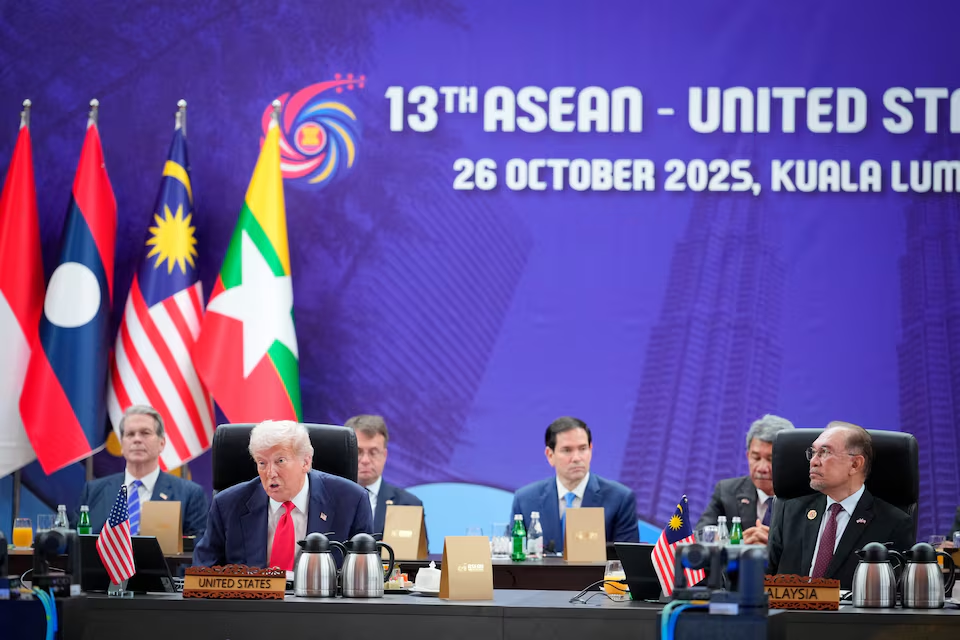News
U.S. and China Reach Trade Framework Ahead of Leaders’ Meeting

Top economic officials from China and the United States agreed Sunday on a framework for a new trade deal, as U.S. President Donald Trump said he was confident he could finalize an agreement when he meets Chinese President Xi Jinping in the coming days.
U.S. Treasury Secretary Scott Basent and Trade Representative Jamison Greer met Chinese Vice Premier He Lifeng and top trade negotiator Li Chenggang in Kuala Lumpur during the ASEAN Summit — marking the fifth round of in-person talks since May.
“I think we now have a very strong framework for the leaders to discuss on Thursday,” Basent told reporters.
He said in an interview with NBC’s Meet the Press that he expected the deal to prevent China from tightening export controls on rare earth minerals and magnets, while also averting Trump’s threat of imposing new 100% tariffs on Chinese goods.
According to Basent, Trump and Xi will discuss U.S. agricultural exports — including soybeans — as well as more balanced trade and cooperation on tackling America’s fentanyl crisis, which served as the justification for the earlier 20% U.S. tariffs on Chinese imports.
China’s Li said both sides had reached an “initial consensus” and would now proceed through their respective internal approval processes.
“The U.S. position has been tough,” Li acknowledged. “We’ve had deep discussions and are working in good faith to find solutions and arrangements to address these concerns.”
Trump arrived in Malaysia on Sunday for the ASEAN Summit, the first stop on his five-day Asia tour. He is expected to meet Xi face-to-face in South Korea on October 30.
After the talks, Trump struck an optimistic tone: “I think we’re going to make a deal with China.”
Trade Truce in Focus
Trump has threatened to impose new 100% tariffs and other trade restrictions on Chinese imports starting November 1, prompting both sides to seek ways to prevent a further escalation of their trade war. The move came after Beijing tightened export controls on rare earth magnets and minerals.
Under an existing trade truce — set to expire on November 10 — both countries had rolled back most of their triple-digit tariffs on each other’s goods.
U.S. and Chinese negotiators said they discussed expanding trade, extending the truce, and addressing issues such as fentanyl trafficking, U.S. port entry fees, rare earth supply, and TikTok’s regulatory future.
Li described the talks as “clear and constructive,” while Basent called them “very good discussions.”
He added that the truce could be extended again — the second time since it was first signed in May — pending a decision by President Trump.
Discussion Points and Regional Concerns
While the White House has officially confirmed the upcoming Trump–Xi meeting, Beijing has yet to do so.
At the ASEAN Summit, Trump suggested that the two leaders could meet both in China and later in the United States — “either in Washington or at Mar-a-Lago.”
Their agenda is expected to include China’s purchase of U.S. soybeans, tensions over democratic Taiwan — which Beijing claims as its territory — and the release of jailed Hong Kong media tycoon Jimmy Lai.
Lai, the founder of the now-shuttered Apple Daily newspaper, has become a high-profile symbol of Beijing’s crackdown on civil liberties in Hong Kong.
Trump also said he would seek China’s help in advancing Washington’s negotiations with Russia, as Moscow’s war in Ukraine continues.
A Fragile Agreement
In recent weeks, tensions between the world’s two largest economies have deepened. A fragile trade deal first reached in Geneva in May — and extended in August — has so far failed to prevent new threats of sanctions, export bans, and retaliatory measures from both sides.
The latest round of talks has largely centered on China’s growing control over rare earth exports, which has led to global shortages.
According to a Reuters report, the Trump administration is now considering restricting software-driven exports to China — covering products ranging from laptops to jet engines — in response to those curbs.
